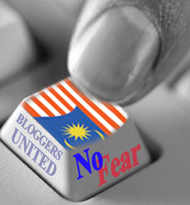KUALA LUMPUR, April 25 (Bernama) — So many controversial comments have come out of the Malaysia Airlines (MAS) and AirAsia deal that all the noise seems to drown out some of its obvious and yet beneficial aspects.It all started last August when MAS’ major shareholder Khazanah Nasional Bhd agreed to swap shares with its AirAsia counterpart, Tune Air Sdn Bhd, which saw Khazanah getting a 10 per cent stake in AirAsia and Tune Air a 20.5 per cent equity in MAS.Khazanah also agreed to acquire a 10 per cent stake in AirAsia X, AirAsia’s long-haul budget affiliate.A Comprehensive Collaboration Framework (CCF) was also signed that aims to realise cost savings and increase revenue in the areas of aircraft purchasing, engineering, ground support services, cargo services, catering and training among the three airlines.The CCF would effectively see MAS concentrate on being a full-service premium carrier, AirAsia a regional low-cost airline and AirAsia X for the medium-to-long haul low-cost sector.It is this CCF that includes that share swap that has attracted considerable negativity from various sectors, including MAS’ employees’ unions.Collaboration between MAS and AirAsia is good but the question is, do we really need a share swap to achieve this?
Of late, there has been market talk, perhaps some of it justified, that a good collaboration need not necessarily have a share swap given the changing dynamics of the aviation industry that has proven to be detrimental to MAS and part of the reason that has led to massive losses reported in its latest financial year.
Industry analysts said too much focus has been given to the “cherry” on top of the deal the sharethat people tend to miss the cream or the mutually beneficial partnership that comes with the cherry.
Collaboration to achieve synergies and economies of scale is quite normal and feasible to any business organisation, either with or without cross- shareholding in the two or more companies.
In the case of MAS and AirAsia, it need not be at the expense of each other or encroaching on each other s brand identity.
What is currently prevailing between the two companies is healthy competition that keeps each on edge to ensure that they remain relevant aviation entities.
The MAS-AirAsia deal had identified the core areas to achieve savings, synergies and increase revenue and given the huge volume expected from the three airlines in these areas, economies of scale can be achieved, thus reducing operational costs that will eventually benefit the customers or flyers.
For example, in the catering area, MAS is known for its good food served on board while AirAsia s food needs to be purchased on board. This collaboration can lead to an extension of this section where now its food will be sold on AirAsia planes, resulting in revenue increase.
It should not be viewed as a competitor “eating” up its rival but from the stand that it encourages healthy competition.
Yet another key plus point is in the maintenance, repair and overhaul (MRO) sector where AirAsia planes get serviced by MAS Engineering, which has massive capacity, instead of another facility in Singapore.
Collaboration agreements are alive and kicking in the oil and gas industry, such as between Petronas and Exxon and Shell for the development of several oil fields in the country.
On a larger scale, there is the more dramatic “win-win” deal between giants Shell and Exxon in the Brent oil fields in the North Sea of northern United Kingdom that shows that joint collaboration between the two competing entities can be achieved without sacrificing each other s identity and business objectives.
Even within the airline industry itself, Air France and KLM started collaborating and ended up owning each other, yet two sovereign countries and seemingly competitors, which decided that they should share their resources via collaboration.
And what critics and detractors of the MAS-AirAsia deal conveniently seem to ignore is the arrival of the Asean Open Skies policy in 2015, just three years down the road, under which all regional restrictions in place by countries in the region will be lifted.
This is an absolute deadline that compels all Asean airlines to beef up their competitiveness where the name of the game is “survival of the fittest.”
Failure to do so might mean airlines will perish or in the case of MAS, be bailed out again.
As a result of the policy, Malaysia would, among other things, has to contend with the elimination of state aid to national airlines, safety net and safeguard mechanisms to ensure sound competition.
So it makes absolute sense for Malaysia s two biggest airlines to collaborate in areas that are mutually beneficial because the competition landscape is about to get really tough.
Airlines that are not competitive, bogged down with cumbersome work rules, old aircraft, high operations cost as well as having quite regular unions
disputes, would be most unlikely to survive.
And this is already happening in Europe and the United States.
So fasten your seat belts. The best way for Malaysia is to pool its aviation resources and get its act together to make its aviation sector competitive and efficient.
— BERNAMA







Synergising ‘Comprehensive Collaboration Framework’
The combination of the revenue for both airlines is in the neighbourhood of RM 20 billion per annum. As has been said before, a lot of components of how the two companies running their different business models for different markets could be shared and synergised.
Like it or not, Malaysia Airlines and Air Asia must rationalize their operations and obtain an optimum level and cost to operate, to remain competitive in their own markets. CCF provide a lot of room for savings and cost rationalization.
Different parties, even selling similar products, help out each other and collaborate to corner the market at the fullest. It is sort of a ‘Corporate Gotong Royong‘, even though its made on a full commercial basis and terms.
It is something Malaysians held on to for generations and worked very well for the community. They co-operate and collaborate on works at upstream level but compete, side by side in a healthy fashion downstream. Look at all traditional market in the kampungs before. The traders never kill each other even though serving the same market.
That model for the airlines business, worked for KLM and Air France, during one of the toughest era premium airliners ever saw. Even though their products are of the same class and stature and they dip into the same upstream market, but their collaboration work.
It is time for ‘Corporate Gotong Royong‘, ahead of the ASEAN Open Sky 2015.
- Economic analysis and commentary
on April 25, 2012 at 12:00 Comments (8)